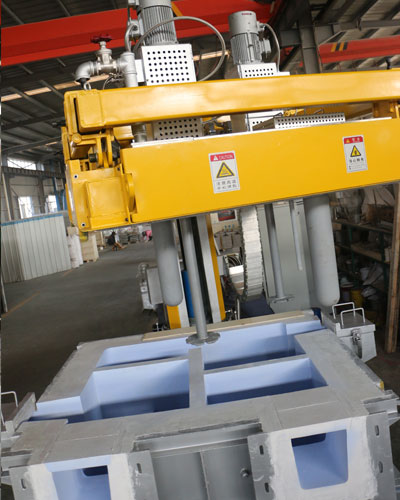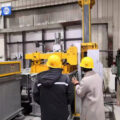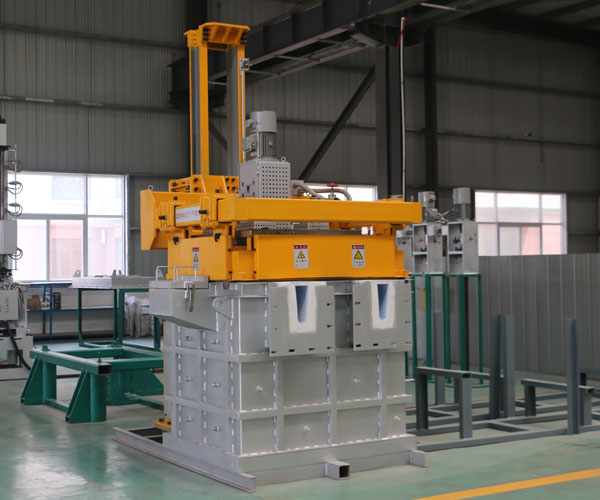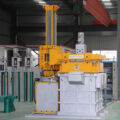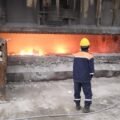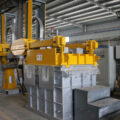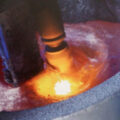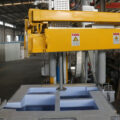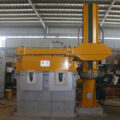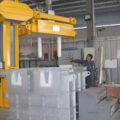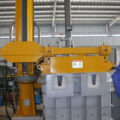Degassing equipment is located on the line between the furnace and the casting station, and its role is to remove impurities contained in the molten aluminum and its alloys that affect its quality and mechanical properties. It has the dual functions of processing and heating. The selected treatment process is based on the principle of gas flotation, in which process gas is injected and evenly dispersed, and tiny bubbles flow upward into the melt. Hydrogen is absorbed into the bubble and eliminated. The alkali metal reacts chemically with the chlorine gas, and the inclusions are excluded from being trapped by the bubble. Large ones collide and small ones are intercepted in a straight line. Then rise to the surface of the melt to form dross.
The rotating nozzle of degassing equipment plays an important role in the refinement of bubbles and the dispersion of bubbles in the aluminum liquid during the rotation, but it also causes the liquid surface to turn. As the nozzle speed continues to increase, a negative pressure zone is formed in the center of the molten aluminum, which intensifies the hydrogen absorption, oxidation, and slag inclusion of the molten aluminum. The blades of the nozzle not only have a horizontal stirring effect on the molten aluminum, but also make the gas and liquid mixture upward. The effect of spraying, which intensifies the churn of molten aluminum. Due to the mechanical action of the blades on the rotating nozzle, the molten aluminum is in a turbulent state, and the centrifugal force causes the molten aluminum to move radially in the nozzle, and the gas is sprayed into the molten aluminum with the flow of the molten aluminum.
When the online degassing equipment speed of the nozzle is low, the nozzle has a small stirring effect on the molten aluminum, the turbulence of the molten aluminum is low, and the mechanical splitting effect of the blade on the gas is small, so the bubble size is larger; when the speed is large, the turbulence of the molten aluminum is large. The degree of flow intensifies, the blade has a large mechanical splitting effect on the gas, and the centrifugal force received by the aluminum liquid is large. The bubble diffuses far away with the liquid aluminum, the probability of the bubble combination is small, and the bubble size is small. Therefore, considering the effect of the rotation speed on the refinement of bubbles and the interference to the molten aluminum, the nozzle rotation speed should be around 250r/min in actual production.
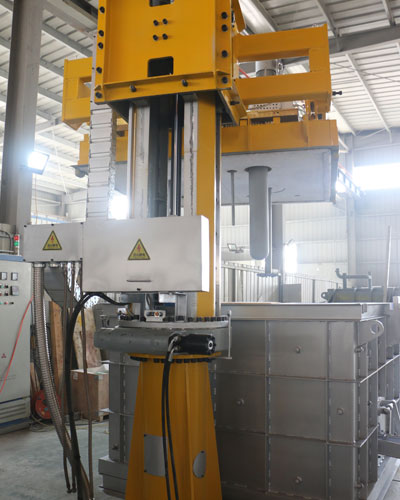
The blades of the nozzle play an important role in the efficiency of hydrogen removal. It can collide and break the bubbles to make the bubble size smaller. At the same time, it uses centrifugal force to scatter the bubbles and disperse them evenly, reducing the probability of bubbles merging and improving the effect of hydrogen removal.
Gas flow is an important parameter for degassing hydrogen from aluminum melt. To achieve a certain hydrogen removal effect in a molten pool with a capacity of about 60t, there must be sufficient gas injection speed. The greater the gas flow, the higher the efficiency of hydrogen removal. However, the airflow cannot be increased unlimitedly, and the air supply can be adjusted within 1.5-6.5m^3/h. If the airflow is too large, there are too many bubbles in the reaction chamber. Relatively speaking, the amount of molten aluminum to be processed becomes gas, and the time for liquid contact is shortened. At the same time, when the airflow is too large, the upper and lower convection of the aluminum liquid is intensified, causing the bubbles to be in the aluminum melt. The staying time in the body is greatly shortened, thereby reducing the effect of hydrogen removal.
For this reason, in actual production, in order to reduce the influence of upper and lower convection and improve the gas utilization rate, excessive gas flow should be avoided as much as possible. It is difficult to improve the degassing efficiency by increasing the gas flow rate alone. The gas flow rate should be controlled so that the aluminum liquid level does not turn over. According to field tests, for 6061 alloy, the gas flow rate is 4-4.5m^3/h when the outgassing rate reaches more than 50% and the molten aluminum does not turn over.

